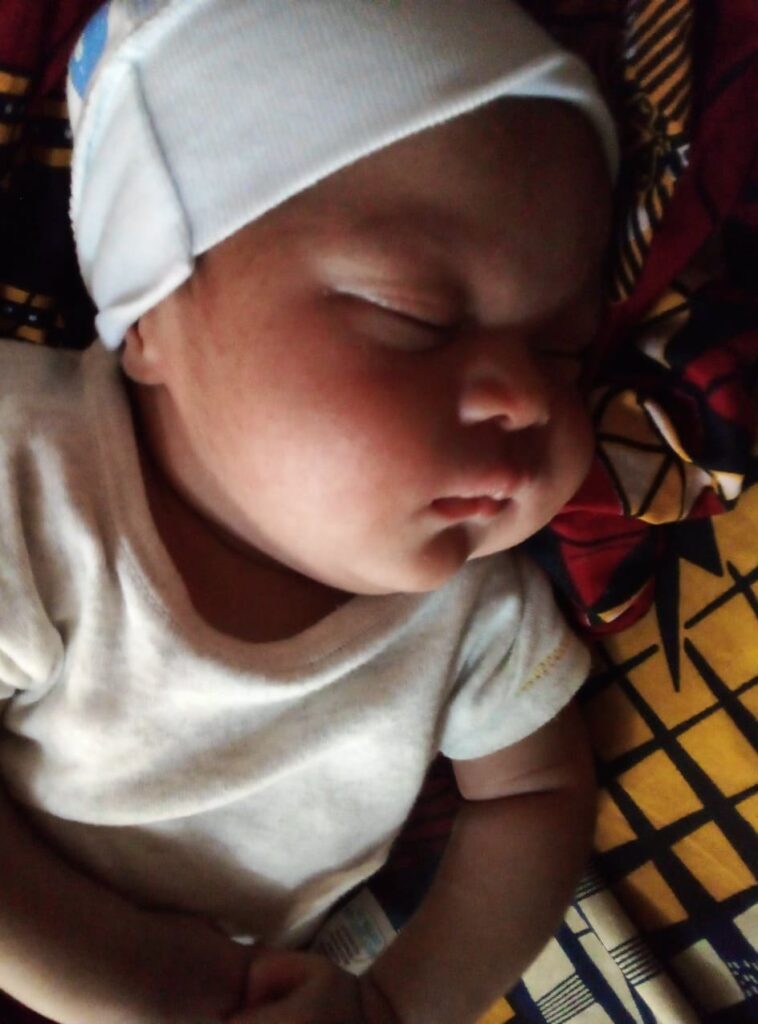My Baby Nose/ Nostrils are Blocked – What to Do
How to Manage Nasal Blockage in a Baby or Newborn. My Baby Nose/ Nostrils are Blocked – What to Do. What should you do if your newborn baby has catarrh, a cough, or both nostrils are closed and is having trouble breathing? My Baby Nose/ Nostrils are Blocked – What to Do.
First of all, as a mother, you are the one who is suffering from whatever your baby is going through. I’m the kind of person that never sleeps. I’ll be monitoring his breathing all the while. Here’s how to treat a newborn or baby’s blocked nose. See also: Children Lace Designs and Styles for Christmas and other special occasions.
For moms, intranasal obstruction in infants may be a cause for concern because nobody likes to witness their little ones experiencing respiratory pain. Although it can be irritating and result in a stuffy nose, headache, and noisy or fast breathing, nasal congestion is safe.
A newborn is a kid who is younger than 28 days old. The child is most susceptible to infections and death during the first 28 days of life. It can be particularly difficult to take care of a child because they are frequently defenseless and completely reliant on their care-givers for all aspects of survival. How to Care for a Newborn or Baby with Nasal Blockage.
Childcare can be so demanding that it demands some preliminary training skills and extreme tolerance to undertake, depending on your line of work. It’s not surprising that society has largely assigned women to that job given their propensity for patience and unconditional affection. How to Manage Nasal Blockage in a Baby or Newborn
However, given their vulnerability, babies are more likely to have a wide range of health issues. It is the caregiver’s responsibility to protect their health and to identify any problems early so that they can be treated if they do get sick.

My Baby Nose/ Nostrils are Blocked – What to Do
When there is an excess mucus production from the globe cells in the upper respiratory system, nasal congestion, also known as nasal obstruction, occurs. When this mucus is thick, it can obstruct the sinuses and nasal passages, producing breathing problems and other congestion symptoms.
Another type of respiratory congestion is chest congestion. In contrast to nasal congestion, it occurs lower in the respiratory system in the chest area. Please take your child to the pediatrician right away if he has chest congestion. My Baby Nose/ Nostrils are Blocked – What to Do. See also: 10 Photos Underage Pregnant Girls at Age 10, 11, 12 – Child Pregnancy
Nasal congestion Nose Blockage – Causes
You may wonder what could possibly be upsetting your child so much. Here is a list of typical causes of nasal and chest congestion, including:
-
Allergies:
Allergies are just a result of your baby’s body rebelling against outside triggers that it finds repulsive, like as pollen, dust mites, hay, or damp linens. They are not caused by any illnesses flowing through their body. You must make sure the property is tidy and devoid of these hazardous triggers as a result.
-
Smoke:
When a newborn breathes in smoke, whether it comes from cooking or smoking cigarettes, it irritates their fragile mucosa, leading to overproduction of mucus as a defense against the irritants and congestion. How to Manage Nasal Blockage in a Baby or Newborn.
Dry air is just air without humidity. To further comprehend this, consider how your nostrils feel while you are riding a moving bike or using a fast oscillating fan that is blowing air bursts into them. Dry, huh? This is bad for a baby and can disrupt their respiratory system. Always make sure your kid has access to clean, sufficient humidity in the air.
-
Viruses
These are dangerous microbes that enter the body and produce symptoms like the flu and the common cold. Viruses have a variety of specialties, and they can affect a population wherever they are most prevalent. Body temperature elevation is typically present with viral congestions, which are diagnosed using the culture-and-sensitivity method in order to rule out a particular virus type and subsequently administer the proper therapy.
Contrarily, any factor that has an impact on the lower respiratory systems can result in chest congestion. These consist of:
Premature birth
Bronchiolitis;
Pneumonia
Dysplastic fibrosis
Asthma
Nose Congestion Signs and Symptoms
If an infant or a newborn has nasal congestion, they will inevitably display the following symptoms:
- breathing loudly
Coughing
clogged nose
Sniffling
breathing through the mouth.
sleeping snoring.
The following may be observed when chest congestion is present:
- arduous breathing
a lot of difficulty eating
Fever \ Coughing
Wheezing
avoiding eating.
What should you do at home if your toddler gets a stuffy nose?
Naturally, a baby’s congestion can cause the caregiver a great deal of distress. Infants’ nasal congestion is common and will quickly clear up. However, everyone is in agreement that the caregiver has anxiety for the amount of days it continues. Here are some actions you may take at home to reduce congestion.
• Suction: A plastic suction bulb is used for this. You may buy this from your neighborhood drugstore or clinic, and the clinic nurse can show you how to use it to blow your child’s nose. How to Manage Nasal Blockage in a Baby or Newborn
• Feeding: Provide consistent, hot meals. Eat less highly spiced meals if you have kids.
• Consistently change your dirty diapers. Now that won’t be good if you leave wet objects on the baby, will it?
• Always keep your home free of allergens like dust mites and pollen.
• Wipe away surplus mucus with a fresh, soft face towel.
• Use saline drops: saline drops are created by combining a certain amount of salt with a certain amount of water. One or two drops should be injected with a syringe into the infant’s nostril; this will aid with moisture and clear up any obstructions. Some people recommend switching from saline to breast milk. Use any method you find most comfortable.
• Avoid using vapor rubs that contain menthol, camphor, or eucalyptus, such as balms and stinging, harsh ointments. The infant is upset by this. They are neither secure nor efficient. How to Manage Nasal Blockage in a Baby or Newborn
• Avoid giving your child cold medications; unless the condition becomes severe, which requires an urgent trip to the doctor, it won’t be a concern. Unless you are a pediatrician with a license, never let your child self-medicate. You must realize that the baby’s body is already purging hazardous viruses or irritants if mucus is producing; do not halt this process with drugs.
• Don’t smoke around your child.
• Give your face a gentle massage. Take note of the cheeks, nasal ridge, and temple.
• Limit your exposure to the cold. Cover the infant only minimally.
• Give warm baths; keep towels away from your baby’s face while the water is hot. It can suffocate them, obstruct their respiration, and irritate their skin.
• Provide a lot of fluids to help them stay hydrated.
• Avoid attempting to blow air or sucking mucus out of the baby’s nose with your mouth. Suction manually using a bulb.
Putting the infant in the right position for nasal congestion episodes:
Usually at night, nasal congestion gets worse. The infant can be supported on your chest, but it’s best to lay them on their back with their head slightly elevated with a pillow. Through gravity, this will finally relieve the stuffiness.
My Baby Nose/ Nostrils are Blocked – What to Do
What warning signals indicate a condition that is growing worse? How can I tell if my baby’s condition is getting worse? How to Manage Nasal Blockage in a Baby or Newborn
The child should often feel better within a few days, but if this doesn’t happen or you start to see the skin darkening around the nose or lips, breathing becoming more difficult, an inability to fall asleep, chest tightness, vomiting, and a high temperature, call emergency services.
Medical care: In serious situations requiring hospital stays, doctors may administer additional oxygen, antibiotics, or other therapies. To pinpoint the precise origin and/or severity of the disease, some laboratory and radiographic tests may also be performed.
In conclusion, a baby’s nasal obstruction or congestion is not dangerous. There are natural ways to help your child feel better at home. Usually, it disappears after a few days. Call for emergency hospital care if the illness worsens and the skin around the lips and nose starts to discolor.



